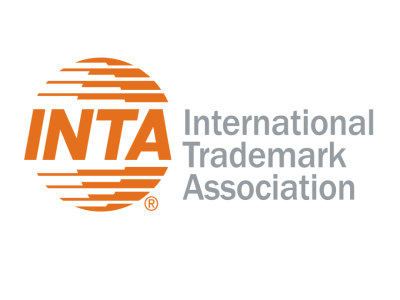New York, New York—October 31, 2023—The International Trademark Association (INTA) filed an amicus brief in the United States Court of Appeals for the Federal Circuit in the case of LKQ Corporation et al. v. GM Global Technology Ops. LLC, No. 2021-2348, urging the Court to maintain the test for evaluating obviousness in the context of design patents enumerated in two prior Federal Circuit precedents, In re Rosen, 673 F.2d 388 (C.C.P.A. 1982) and Durling v. Spectrum Furniture Co., Inc., 101 F.3d 100 (Fed. Cir. 1996) (the “Rosen-Durling” test).
INTA’s brief was filed as part of an en banc review of a prior Federal Circuit panel decision, in which some members of the panel questioned whether the Rosen-Durling test continues to be valid in light of the Supreme Court’s decision in KSR International Co. v. Teleflex Inc., 550 US 398 (2007). In that case, the Supreme Court adopted a test to evaluate obviousness within the meaning of 35 U.S.C. § 103 that requires courts to pursue an “expansive and flexible” inquiry that takes into account: (i) the scope and content of the prior art; (ii) the differences between the prior art and the asserted claims; (iii) the level of ordinary skill in the art; and (iv) any secondary considerations of obviousness.
Among the issues on which the Federal Circuit invited comment from amici was whether, “Given the length of time in which the Rosen-Durling test has been applied, would eliminating or modifying the design patent obviousness test cause uncertainty in an otherwise settled area of the law?” INTA’s brief answered yes to this question and addressed the many negative consequences that would result from the abandonment or substantial modification of the Rosen-Durling test, not only in the context of design patents but also in the trade dress context. In particular, INTA’s brief argued that “the abrogation or substantial modification of the Rosen-Durling test threatens to upset the balance between trade dress and design patent protection by weakening the enforceability of design patents. Trade dress protection is not available for certain designs because of statutory and judicial limits on the scope of that type of intellectual property protection, but such designs are capable of being protected by design patents in many circumstances. By making design patent protection harder to obtain, a gap will be created between what design patents and trade dress protect, thereby facilitating infringement, disincentivizing innovation, and ultimately harming consumers and intellectual property owners.”
INTA’s brief recapitulated the complementary purposes of design patent and trade dress protections, and the important roles both play in protecting the rights of intellectual property owners and consumers. Because trade dress protection, as it currently exists, is not capable of providing the type of protection that design patents offer, INTA argued that circumscribing the scope of design patent protection through an amorphous test for obviousness would increase the potential for infringement and counterfeiting, and simultaneously upset the balance between trade dress and design patent protection.
Indeed, according to INTA’s brief, it is in the context of anticounterfeiting efforts that “design patents have become the front line of defense to combat the growing counterfeiting problem plaguing many brand owners when it comes to product designs.” For this reason, pending US legislation would allow US Customs and Border Protection to seize goods that infringe design patents as they currently do for goods that infringe registered trademarks, trade dress, and copyrights.
Read INTA’s amicus brief here.
About the International Trademark Association
The International Trademark Association (INTA) is a global association of brand owners and professionals dedicated to supporting trademarks and complementary intellectual property (IP) to foster consumer trust, economic growth, and innovation, and committed to building a better society through brands. Members include nearly 6,000 organizations, representing more than 33,500 individuals (trademark owners, professionals, and academics) from 181 countries, who benefit from the Association’s global trademark resources, policy development, education and training, and international network. Founded in 1878, INTA is headquartered in New York City, with offices in Beijing, Brussels, Santiago, Singapore, and the Washington, D.C., Metro Area, and representatives in Amman, Nairobi, and New Delhi. For more information, visit inta.org.
You may also like…
USPTO set for new fee structure for 2025
The United States Patent and Trademark Office (USPTO) is poised for a pivotal transformation in its fee structure,...
EPO broadens ability to protect known ‘substances or compositions’ in medicine
In decision T 1252/20, the European Patent Office (EPO) has broadened the ability to protect known substances or...
The largest patent prosecution firms in Mexico
The intellectual property scene in Mexico experienced significant growth from 2018 to 2022. According to data from IP...
Contact us to write for out Newsletter














